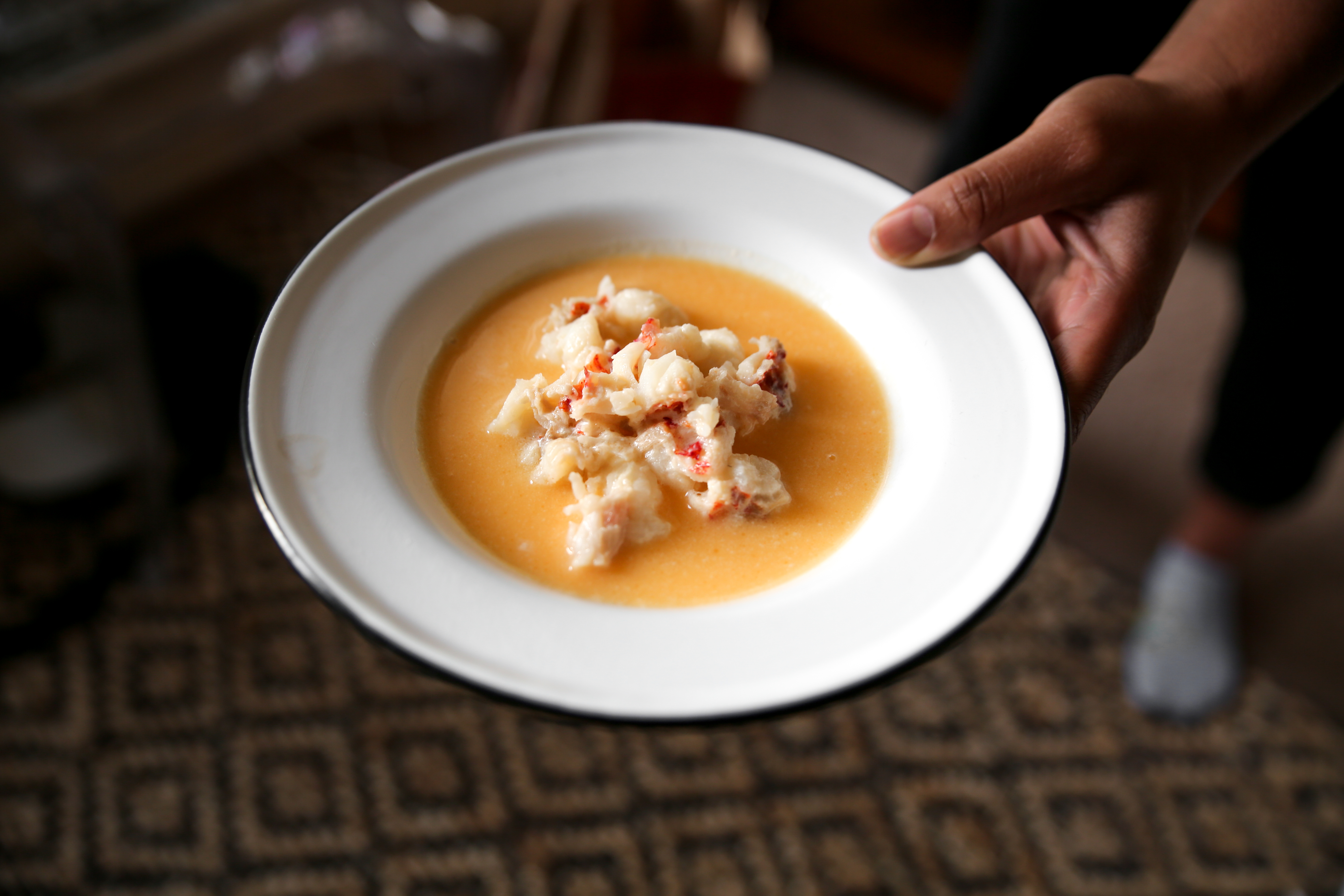Auntie Anitas Lobster Stew

Stirring is the most important thing in this masterpiece, otherwise it will curdle. According to experts on fine Maine cookery, the important steps to success in creating the perfect lobster stew are, first, this partial cooling before ever so gently adding the milk - a mere trickle at a time. The constant stirring until the stew blossoms a rich salmon color under your spoon and, finally, the aging, since every passing hour improves ins flavor. Some ‘experts’ even say two days. Overnight is good and 5 to 6 hours improves its flavor considerably. Be sure to reheat slowly.
INGRIDIENT
DIRECTION
Step: 1
Bring a large pot of water to a boil over high heat. Add the lobsters; boil until the lobsters turn bright red and the claws are easily pulled off, 12 to 14 minutes. Once done, remove with a pair of tongs, and allow to cool until cool enough to handle.
Step: 2
Split the lobsters in half lengthwise. Remove and reserve the green tomalley (liver), the red coral (eggs), and the thick white substance from inside the claws. Melt the butter in a large saucepan over medium heat. Stir in the reserved tomalley and coral. Cook and stir for 8 minutes, breaking up the tomalley.
Step: 3
Remove the meat from the claws and tail. Remove the black vein from the tail, cut the meat into bite sized pieces, and add to the tomalley. Reduce the heat to low; cook for 10 minutes, stirring frequently. Pour the milk into the saucepan a trickle at a time, stirring constantly, until the stew is thick, hot, and has blossomed into a rich salmon color.
Step: 4
Place the stew in the refrigerator, and let stand 5 to 6 hours. This is one off the secrets of truly fine flavor. It’s called aging. Once the stew has aged, return to the stove over medium-low heat, and cook until hot. You do not need salt or pepper when the stew is prepared in this manner.
NUTRITION FACT
Per Serving: 554 calories; protein 50.8g; carbohydrates 12.2g; fat 33g; cholesterol 301.1mg; sodium 933mg.
The word “stew” can process to 2 time a food and a make dishes method. Stewing involves not fast cooking chunks of meat, raw fruit or beans in a flavorful liquid . It’s same as to braising, but it makes have a few notable differences. The meat is chopped into smaller pieces but of being processing menu whole , and the liquid completely covers the contents in a stew as compared to a braise’s halfway all of it . When meat or raw fruit are cooked using this method, the resulting dish is called stew.
Stew has a reputation for making a rib-sticking eating process that comfortable you up on a cold , winter day. It’s right that ; a bowl of old menu of beef stew does have warming properties , but stew’s comfort factor goes way beyond preserving you from the chill . It’s all about those tender chunks of meat and vegetables, swimming in a thick, ultra-rich gravy. The way they come together make the greatest comfort food, no matter the weather.





